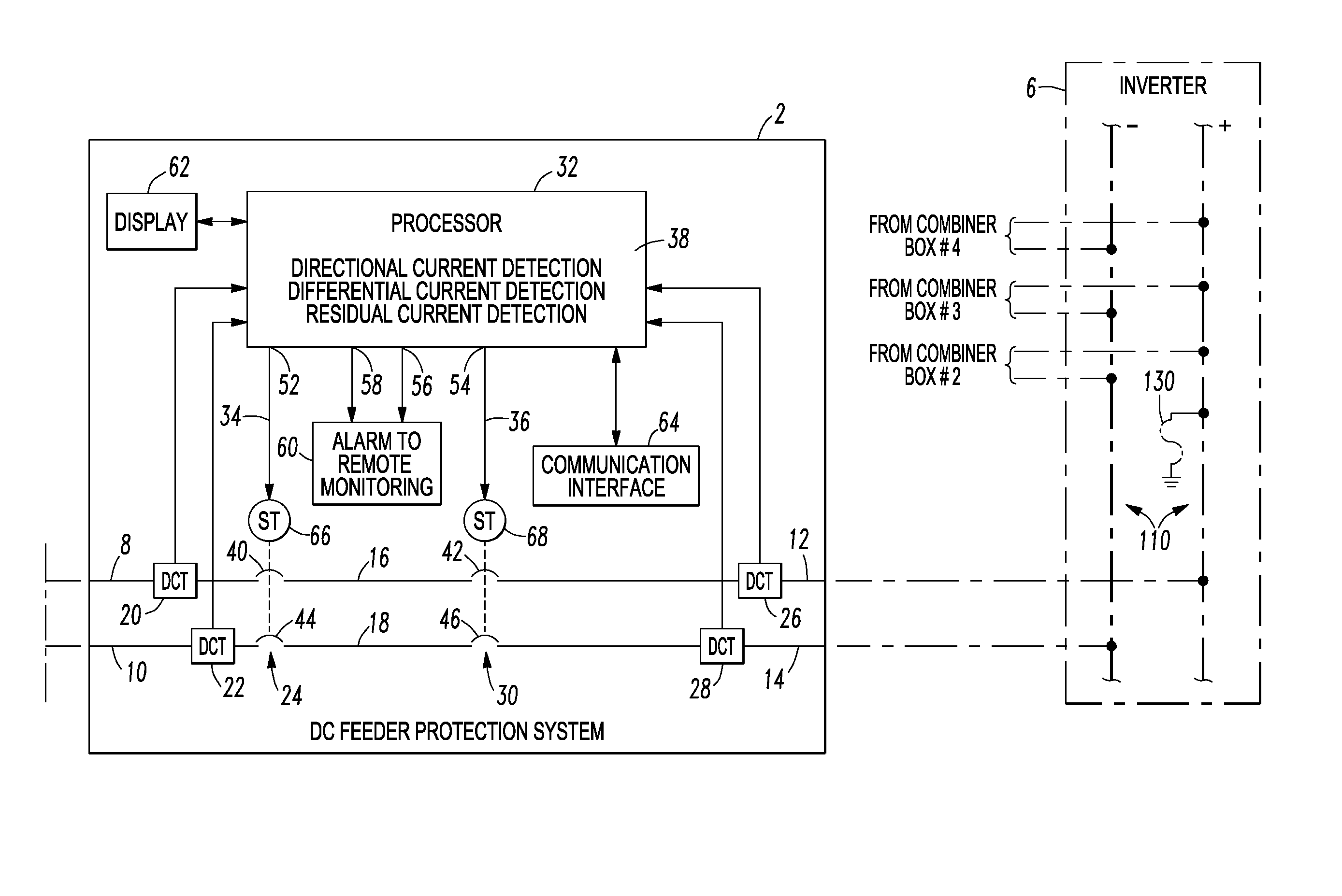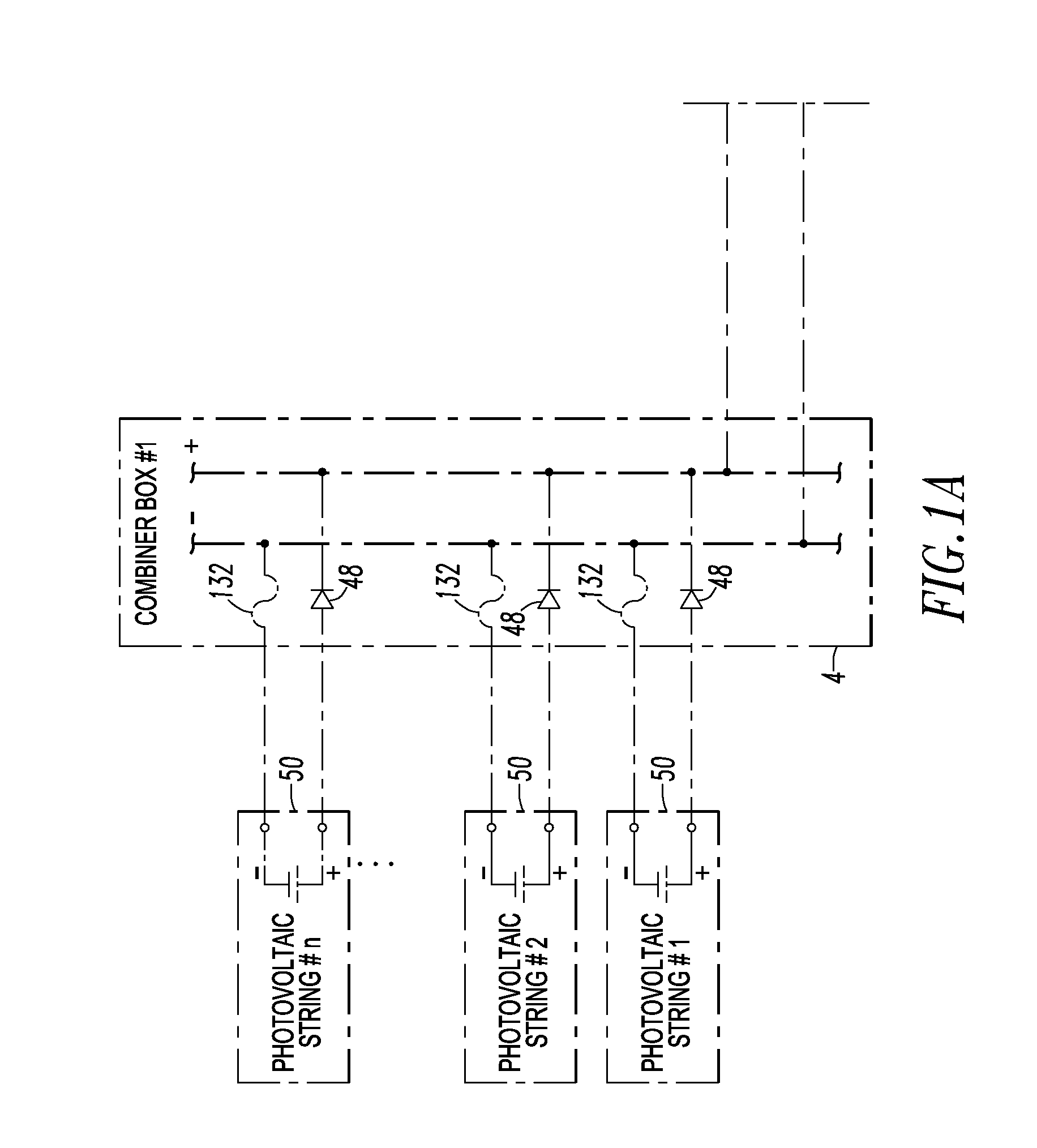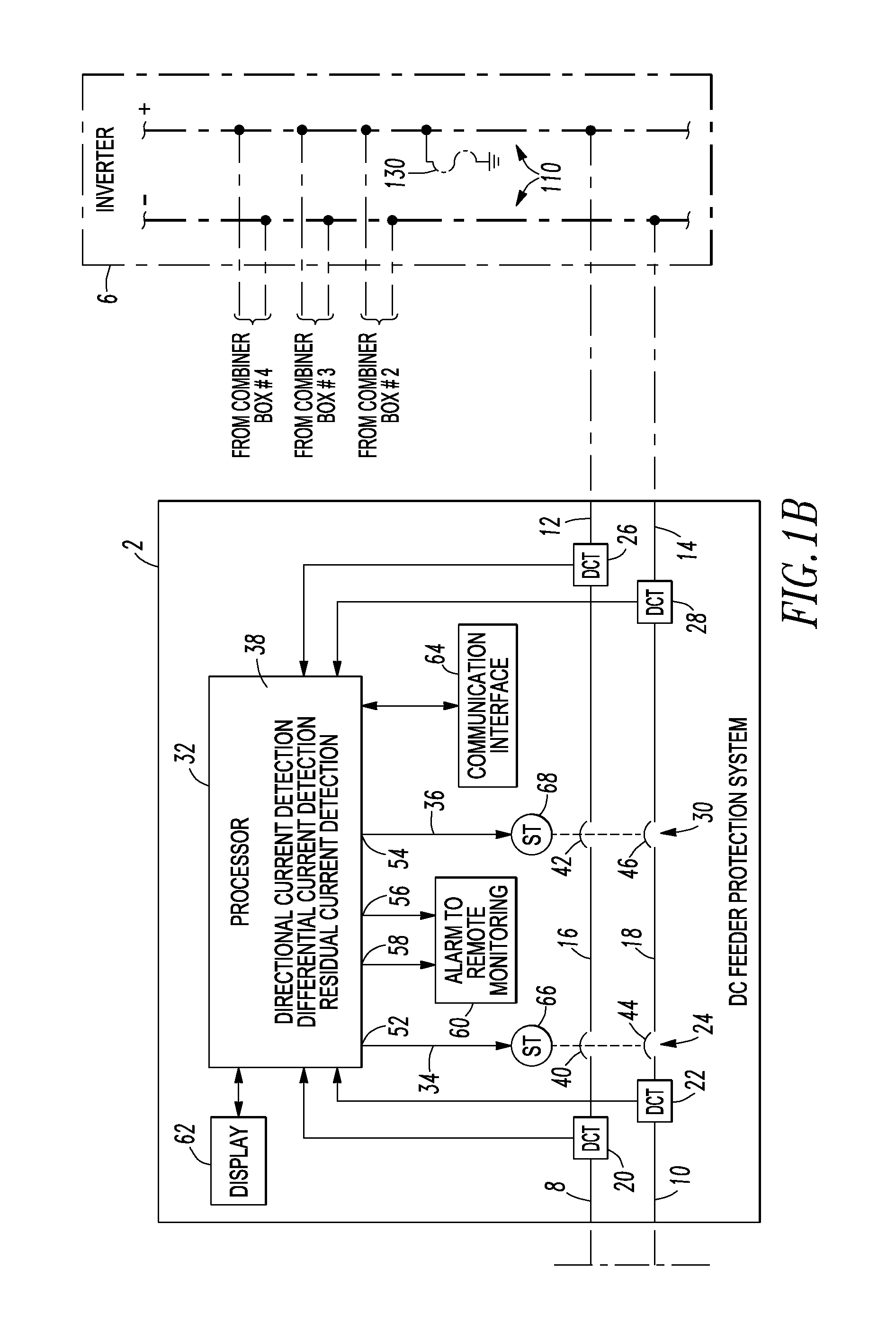DC feeder protection system
a protection system and feeder technology, applied in the direction of emergency protection arrangement details, emergency protection arrangement for limiting excess voltage/current, electrical equipment, etc., can solve the problems of back feeding, between the combiner box and the inverter, limited known protection scheme available and/or in us
- Summary
- Abstract
- Description
- Claims
- Application Information
AI Technical Summary
Problems solved by technology
Method used
Image
Examples
example 1
[0026]The example combiner box 4 can include a plurality of blocking diodes 48, each of which corresponds to input from a corresponding direct current power source, such as the example PV strings 50. The protection provided by the disclosed concept plus the example blocking diodes 48 will be compared to a known system with minimum protection for nine fault conditions as are discussed below in connection with Examples 22-30. The inclusion of the blocking diodes 48 in the analysis is due to their use in some photovoltaic systems, although such blocking diodes are not required.
example 2
[0027]The example first, second, third and fourth current sensors 20,22,26,28 are bipolar direct current transducers (DCTs). This can include, for example and without limitation, a shunt 100 and an isolation amplifier 102 as will be discussed in connection with FIG. 2A, a Hall effect sensor (not shown), or any suitable device that can produce the desired current signals with suitable accuracy.
example 3
[0028]The example two-pole circuit interrupters 24,30 can be structured to be opened manually or opened in response to an external signal (not shown). For example, in addition to primary protection functions of the processor routine 38, the DC feeder protection system 2 can include provisions for manual opening of the four poles 40,42,44,46. This can be accomplished by accepting an input signal (not shown) which will cause those poles to be opened. The input signal can originate either locally or remotely, from an operator or other external trigger, in order to allow part of a PV array (e.g., without limitation, the DC feeder in connection with conductors 8,10,12,14) to be taken out of service while the remainder of the PV array from other combiners continues in operation.
[0029]This manual opening feature for multiple feeders (not shown, but including, for example and without limitation, other DC feeder protection systems for other combiner boxes feeding the inverter 6) can be tied ...
PUM
 Login to View More
Login to View More Abstract
Description
Claims
Application Information
 Login to View More
Login to View More - R&D
- Intellectual Property
- Life Sciences
- Materials
- Tech Scout
- Unparalleled Data Quality
- Higher Quality Content
- 60% Fewer Hallucinations
Browse by: Latest US Patents, China's latest patents, Technical Efficacy Thesaurus, Application Domain, Technology Topic, Popular Technical Reports.
© 2025 PatSnap. All rights reserved.Legal|Privacy policy|Modern Slavery Act Transparency Statement|Sitemap|About US| Contact US: help@patsnap.com



